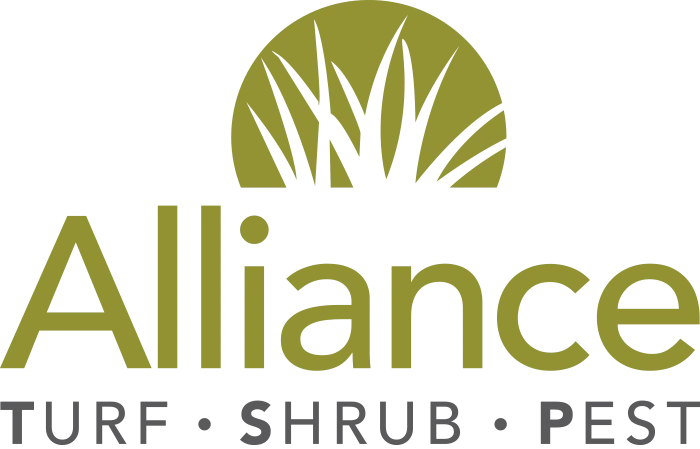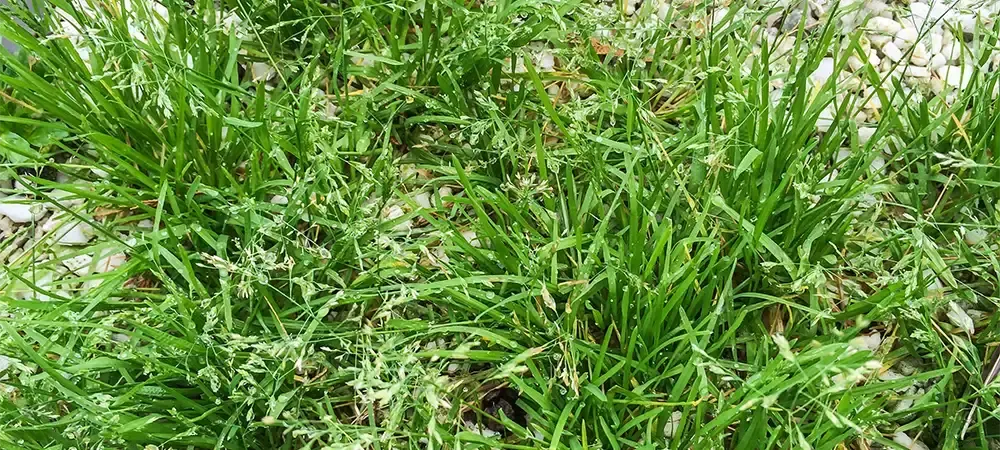
The Most Common Winter Weeds in Georgia (With Pictures)
As winter sets in and your grass goes dormant, you might notice something frustrating: patches of weeds popping up in your turf. In Georgia, winter annual weeds germinate in the late autumn (when our soil hits roughly 70°F), grow through the mild winter, and drop seeds in the spring.
Here is a guide to identifying the most common winter weeds found in Georgia lawns.
Poa Annua (Annual Bluegrass)
Poa annua, commonly known as annual bluegrass (or sometimes simply "bluegrass"), is arguably the most difficult winter weed to manage in Georgia. It is a grassy weed, meaning it looks deceptively similar to your actual lawn turf, which often delays detection.
- Appearance: It is a lighter, lime-green color compared to dormant Bermuda or deep green Fescue. The blades are soft with boat-shaped tips.
- The Giveaway: In late winter and early spring, Poa annua produces distinctive white, feathery seed heads that sit lower than your mower blades.
- Why It’s a Problem: It dies off rapidly in the Georgia summer heat, leaving behind large bare spots. A single plant can produce thousands of seeds, which lie dormant in your soil waiting for next autumn.
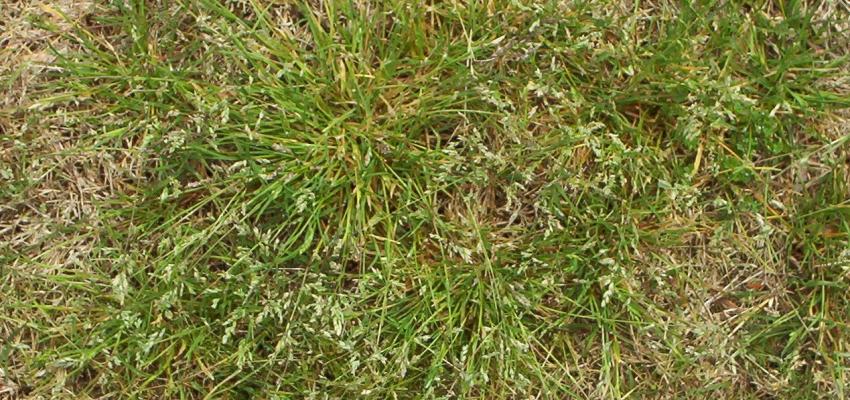
Henbit (Dead Nettle/Bee Nettle)
Henbit is a member of the mint family and is one of the most recognizable winter weeds in the Southeast.
- Appearance: It has square stems (roll them between your fingers to check) and scalloped, rounded leaves that clasp the stem.
- The Giveaway: In early spring, it produces small, trumpet-shaped purple flowers.
- Why It’s a Problem: It thrives in thin or moist areas of the lawn. If your turf is thin, Henbit will quickly take over the empty space.
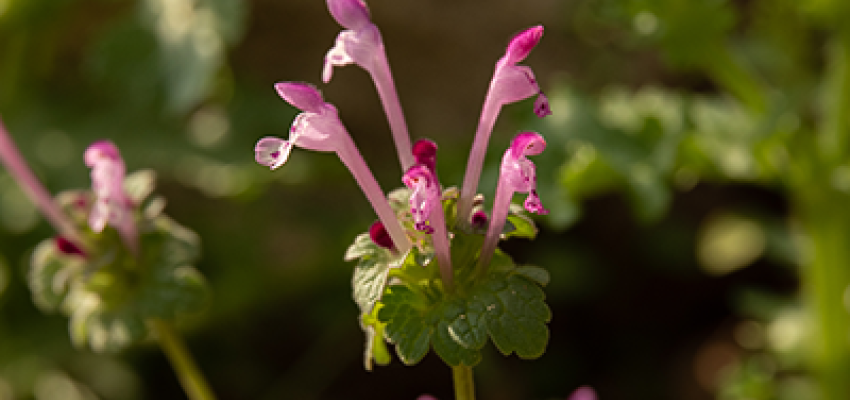
Purple Deadnettle (Purple Archangel/Red Deadnettle/Velikdenche)
Often confused with Henbit, Purple Deadnettle is a close relative that also thrives in Georgia's cool season.
- Appearance: Unlike Henbit, its leaves are triangular and pointed. The leaves near the top of the plant often turn a reddish-purple color.
- The Giveaway: It also has small purple flowers, but the reddish tint on the upper leaves is the easiest way to tell it apart from Henbit.
- Why It’s a Problem: It spreads aggressively in areas where the soil has been disturbed or where the lawn density is low.
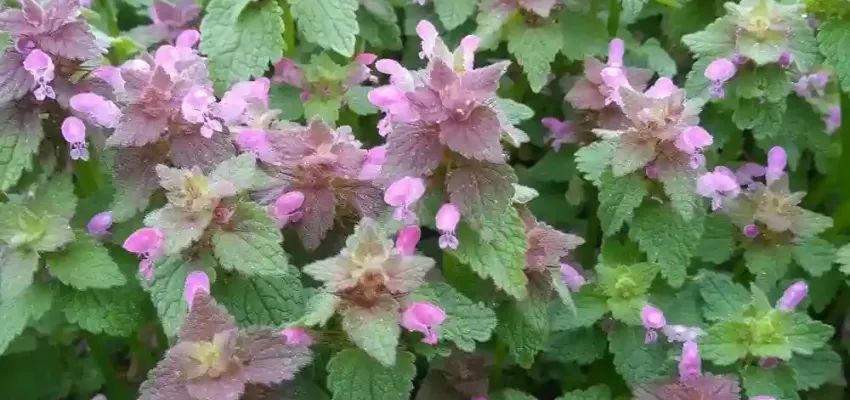
Common Chickweed (Winterweed/Starweed/Chickenwort)
Chickweed is a low-growing weed that forms dense, mat-like patches. It is particularly fond of the moist winters we often experience in Georgia.
- Appearance: It has small, smooth, egg-shaped leaves that grow in opposite pairs along the stem.
- The Giveaway: Look for tiny, star-shaped white flowers.
- Why It’s a Problem: Because it grows in a dense mat, it can choke out warm-season grass, causing it to struggle when it tries to green up in the spring.
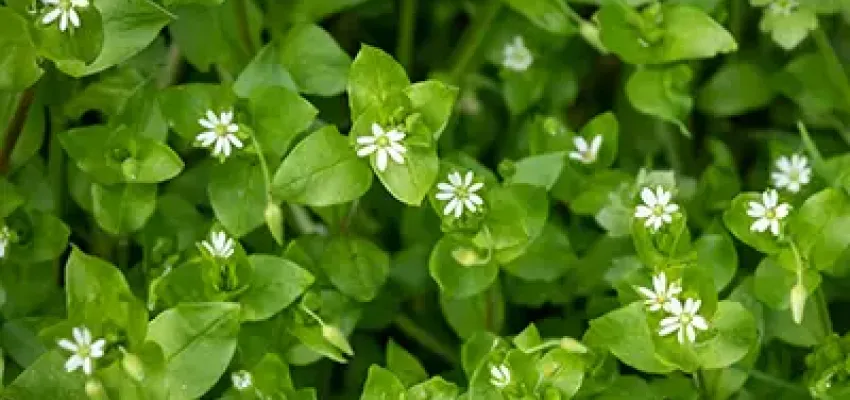
Hairy Bittercress (Springcress/Lamb's cress)
This weed is often the first to emerge in Georgia lawns and is notoriously annoying to physically pull.
- Appearance: It grows as a small rosette (a circular arrangement of leaves) close to the ground with tall, thin flower stems shooting up from the center.
- The Giveaway: Tiny white flowers on tall stalks.
- Why It’s a Problem: It has a unique defense mechanism. If you brush against a mature Hairy Bittercress plant, the seed pods explode, launching seeds several feet away to spread the infestation across your yard.
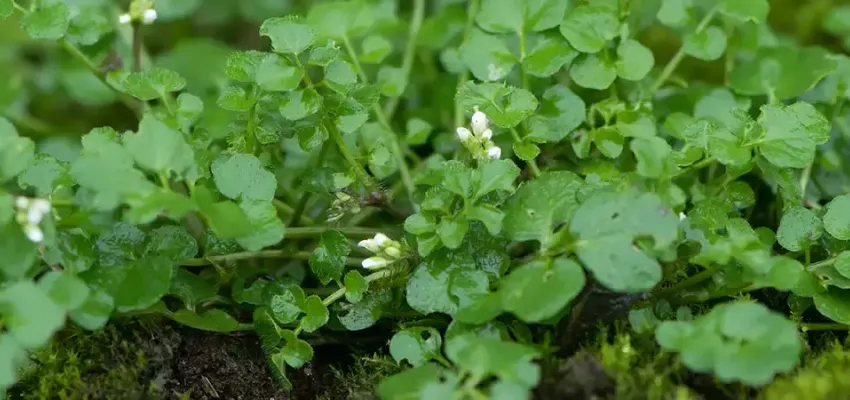
Wild Onion & Wild Garlic
While distinct from the broadleaf weeds above, these are a frequent complaint from Georgia homeowners during the winter months.
- Appearance: They look like tall, thin, waxy chives growing much faster than the rest of your grass.
- The Giveaway: The smell. If you mow them or crush the leaves, they release a strong onion or garlic odor.
- Why It’s a Problem: They grow from bulbs deep underground, making them very difficult to pull by hand (the tops usually snap off, leaving the bulb to regrow).

Should I Just Get Professional Weed Control Services?
Sometimes managing winter weeds infestations requires more than just pulling them by hand, or is just too time-sucking and too much of a hassle. Professional weed control is often the most effective solution because it combines precise timing with commercial-grade products that aren't typically available to homeowners and DIY treatments can easily damage your turf if applied incorrectly. A professional service ensures the right pre-emergents are applied at the exact moment soil temperatures drop in the fall, preventing infestations before they start while keeping your lawn safe.
If you are tired of spending your time pulling weeds only for them to come back, let Alliance TSP, Inc. take the work off your hands. Contact us today to discuss a treatment plan for your lawn.
